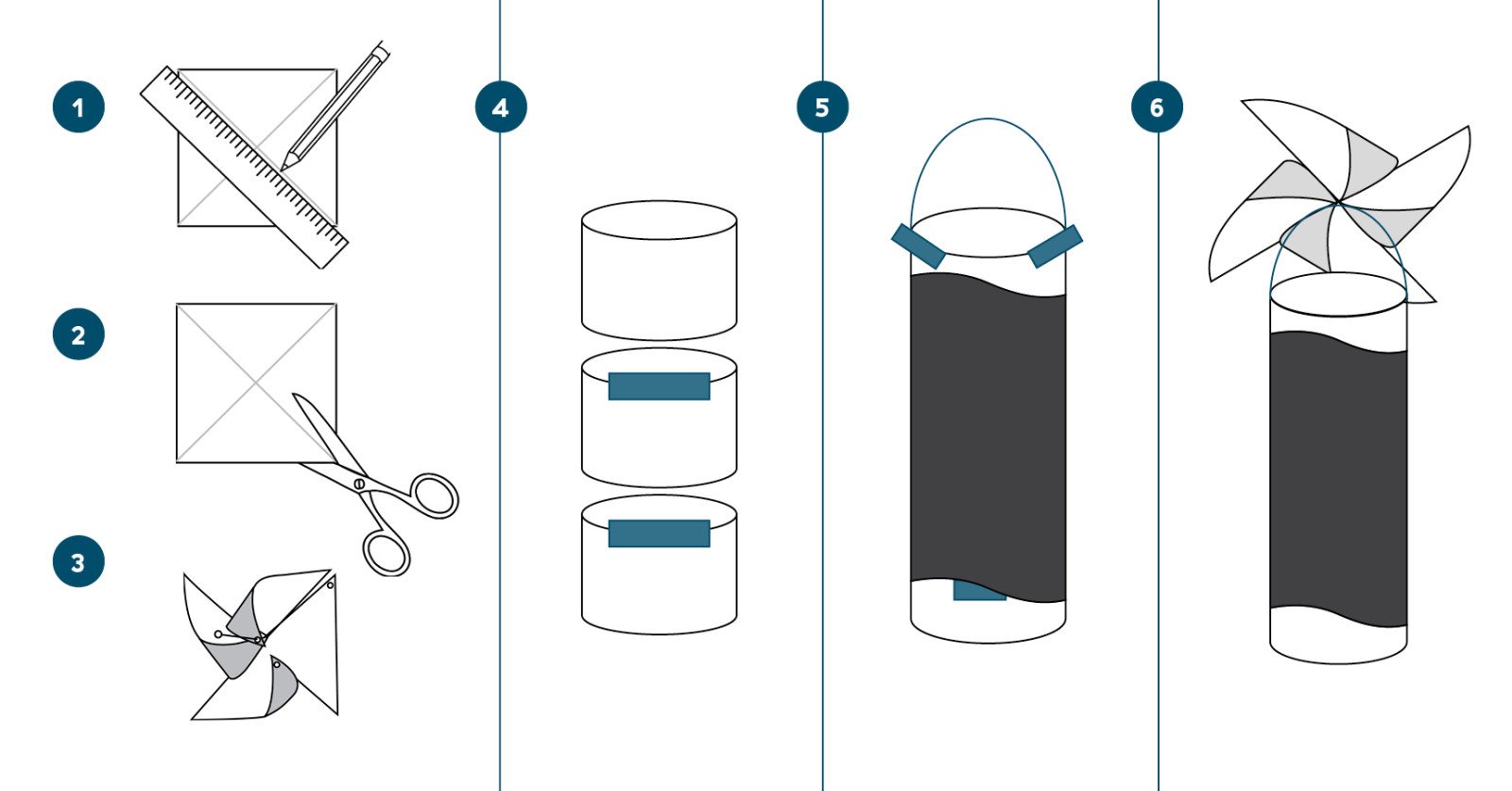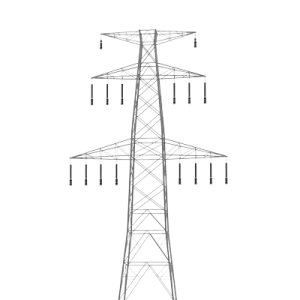Thermal energy experiment
Build a solar updraft tower to see radiation and convection at work.

Overview
Ask students where thermal energy comes from and then build a solar updraft tower to see examples of radiation and convection. Think about ways you use heat energy at home.
Instructions
What you'll need
- "Thermal energy experiment" worksheet
- "Thermal energy experiment instructions" handout
Each small group of students will need the following:
- One 15 cm x 15 cm paper square
- Three clean tin cans of the same size with tops and bottoms removed (it’s easier to remove the bottoms of 796 ml cans)
- Tape
- Black construction paper to wrap the around the cans
- Wire or two paper clips
- Thumb tack
- Two stacks of books about 4 to 5cm high
- Heat lamp (optional)
Notes:
- Build a solar updraft tower before the activity so students can see what it should look like.
- It may be helpful to have two or three extra adults in the class for this activity.
- This experiment can also be done as a demonstration if it works better for the class depending on access to materials, time or classroom management.
Introduction
- Ask students about thermal energy or heat energy.
- What are some sources of thermal energy? Where can heat come from?
- Make a class list on the board.
- The Sun is a source of thermal energy and its energy travels to Earth through radiation (write the word ‘radiation’ on the board).
- Radiation is when thermal energy travels through space by a wave, like when the Sun’s heat travels to Earth or you feel the warmth of a campfire or fireplace.
- Another way that heat or thermal energy can move is through convection (write the word ‘convection’ on the board).
- Convection is when heat moves like a current through a fluid or gas, like water or air.
- Did you know that hot air rises? When air is warmed, it moves around and rises like in a hot air balloon.
- Today’s experiment shows both radiation and convection.
Solar tower experiment
- Show students the solar tower you built ahead of time.
- Have students work in small groups and guide them through building the solar towers using the "Thermal energy experiment instructions" handout.
- Safety note: have an adult help students with the thumb tack and pinwheel.
- Have students complete page 1 of the "Thermal energy experiment" worksheet while they wait for the air to warm up and the pinwheels to spin.
Discussion
- As a class, talk about what happened with the solar towers and why it happened.
- Heat from the Sun travels through space in waves to Earth (radiation).
- The colour black absorbs heat, so the black construction paper and metal cans absorb the heat and warm the air in the tower. Like a hot air balloon, the hot air moves around faster and rises like a current (convection).
- As the hot air rises, it spins the pinwheel on its way out and new air flows into the tower through the space at the bottom of the tower.
- Give students time to work on page 2 of the "Thermal energy experiment" worksheet.
Energy at home
- We use heat energy from the Sun or other sources to heat our homes and buildings. If we have windows and doors open when the heat is on, the hot air will flow out like it flowed out the top of our solar towers.
- Remember to keep windows and doors closed when the heat or air conditioning is on.
Modify or extend this activity
- Make other variations of the solar updraft tower and see how the results change: remove the black construction paper, change the size of the pinwheel, change the height of the books, change the size of the cans, etc.
- Watch this 4-minute video of a traditional pit cook on Vancouver Island to see an example of conduction. This Shaw Spotlight video was produced with respect to the Lekwungen (lək̓ʷəŋən) people of Southern Vancouver Island.
Curriculum Fit
Grade 3 Science
Big idea
- Thermal energy can be produced and transferred
Content
- Sources of thermal energy
- Transfer or thermal energy
Curricular competencies
Questioning and predicting
- Demonstrate curiosity about the natural world
- Make predictions based on prior knowledge
Planning and conducting
- Safely use appropriate tools to make observations and measurements, using formal measurements and digital technology as appropriate
Processing and analyzing data and information
- Compare results with predictions, suggesting possible reasons for findings
Evaluating
- Make simple inferences based on results and prior knowledge
- Identify some simple environmental implications of their and others’ actions
Assessments
- Assess student worksheet for ability to make a prediction, draw the set-up and explain what happened in the experiment.
- Assess students’ ability to collaborate in their small groups (work collectively and support group interactions) to build the solar tower.
Teaching Notes
Sources of thermal energy
Thermal energy can be produced by chemical reactions, friction, the Sun, etc. Many chemical reactions make heat energy such as hand warmers, burning gasoline, decomposition, etc. Friction happens when two objects are rubbed together. If you rub your hands together, you can feel the heat generated. The Sun is a great source of energy that warms Earth enough for plants and animals to live, and can also be used for heating or electricity.
Thermal energy transfer
Thermal energy transfer can happen through conduction, convection or radiation. Conduction happens through objects touching (e.g. saucepan on a stove), convection happens as a current through gas or liquid (e.g. hot air rising), and radiation is heat that travels through space, like the heat you feel when you stand beside a campfire or fireplace, or heat from the sun.







